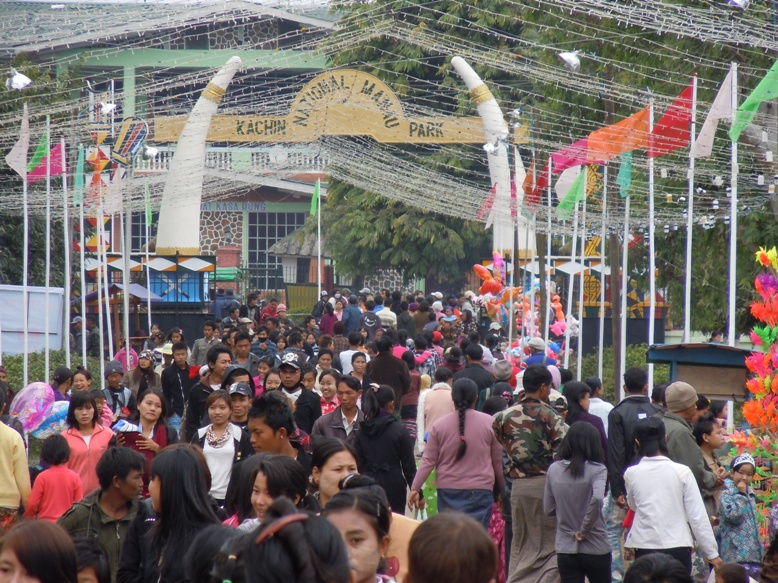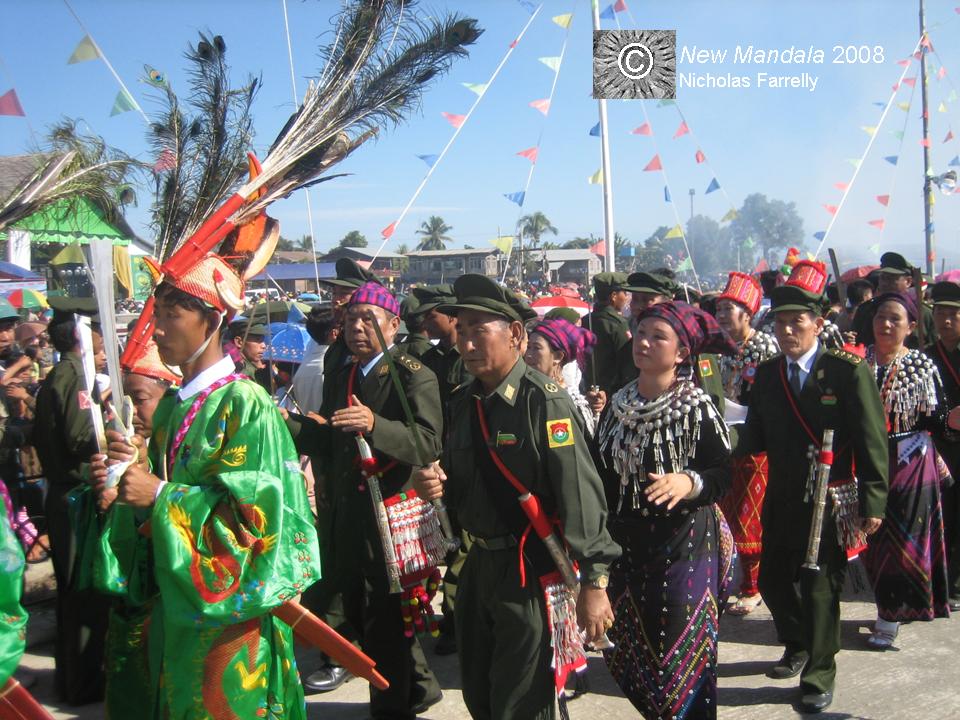As many New Mandala readers know I have a longstanding scholarly interest in the Manau festivals organised by various Jinghpaw, Jingpo and Singpho groups across mainland Southeast Asia.
The most important of these festivals, and one that I have attended on numerous occasions, marks Kachin State Day: 10 January each year. Held at the sprawling Manau ground in the northern suburbs of Myitkyina, the capital of the Kachin State, it is a time for dancing, feasting and catching-up. It is a week-long festival of spectacular proportions. These reports from 2008 and 2011 give some indication of the colour and culture on display.
In January 2012, however, things are different. Since the civil war between the Kachin Independence Army and the Burmese government re-ignited on 9 June 2011 there is no chance of a large-scale Manau. The Manau of 2008, marking the 60th anniversary of the Kachin State, and the largest in recent times, saw thousands of fighters from all of the Kachin armed groups attend. Such a peaceful gathering — bridging the political divides — is now impossible. With everything that has happened since, it seems like a lifetime ago.
There is much that will, in time, be written about all of these events.
For today, Kachin State Day 2012, I would like to make a simple but important point, and one that is particularly worth emphasising as the renewed Kachin war enters its eighth month.
A full Manau festival requires days of choreographed movement where long lines of hundreds, or thousands, of dancers follow a set pattern for hours at a time. In the hot sun, and with no respite, Kachin dancers, old and young, rich and poor, will sway and rock, and giggle and pose, as they enjoy the shared experience (and modest hardship) of the dancing procession. It breeds solidarity, no doubt.
A week-long Manau is what the Kachin do for fun.
It takes stamina and real devotion to the task. To be on the Manau ground, during the final dance, when the Kachin survivors have outlasted all of the VIPs, the government dignitaries, and the like, is to feel something of the strength that comes with their culture and its performance through the Manau.
This is why to fight these people in a guerrilla war, in their own hills, seems a quite astounding miscalculation. Just ask any Kachin: for centuries the Kachin have proven themselves adept on the battlefield. They consider themselves a warrior people.
Some Kachin even argue that their Manau festivals breed exactly the characteristics that have made them so effective against the Burmese army. While that is the sort of assertion we cannot prove, the Kachin will also tell you that through their festivals they feel united and strong. And every Manau only reinforces their sense of toughness and their resolve.
*********
For those New Mandala readers looking to examine this issue in more detail there are plenty of videos online of Manau festivals where the Kachin Independence Army dances openly with its weaponry on display. I would bet that the next big Manau we see in the Kachin State follows that style. And the next major milestone for the Kachin will be 5 February 2012 — the 51st anniversary of Kachin Revolution Day. In parts of the Kachin State it may look something like this.
 Facebook
Facebook  Twitter
Twitter  Soundcloud
Soundcloud  Youtube
Youtube  Rss
Rss 
